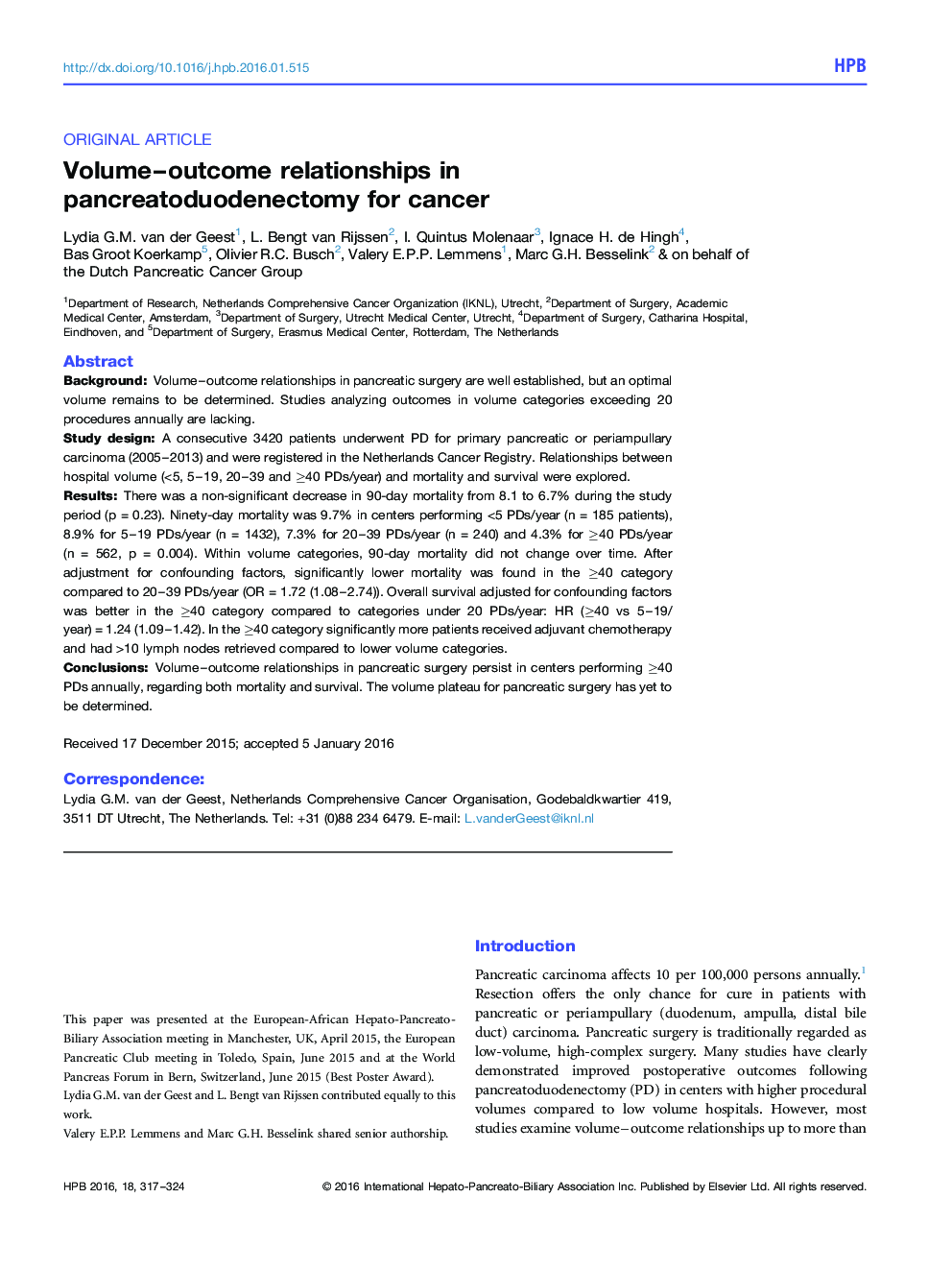| Article ID | Journal | Published Year | Pages | File Type |
|---|---|---|---|---|
| 3268453 | HPB | 2016 | 8 Pages |
BackgroundVolume–outcome relationships in pancreatic surgery are well established, but an optimal volume remains to be determined. Studies analyzing outcomes in volume categories exceeding 20 procedures annually are lacking.Study designA consecutive 3420 patients underwent PD for primary pancreatic or periampullary carcinoma (2005–2013) and were registered in the Netherlands Cancer Registry. Relationships between hospital volume (<5, 5–19, 20–39 and ≥40 PDs/year) and mortality and survival were explored.ResultsThere was a non-significant decrease in 90-day mortality from 8.1 to 6.7% during the study period (p = 0.23). Ninety-day mortality was 9.7% in centers performing <5 PDs/year (n = 185 patients), 8.9% for 5–19 PDs/year (n = 1432), 7.3% for 20–39 PDs/year (n = 240) and 4.3% for ≥40 PDs/year (n = 562, p = 0.004). Within volume categories, 90-day mortality did not change over time. After adjustment for confounding factors, significantly lower mortality was found in the ≥40 category compared to 20–39 PDs/year (OR = 1.72 (1.08–2.74)). Overall survival adjusted for confounding factors was better in the ≥40 category compared to categories under 20 PDs/year: HR (≥40 vs 5–19/year) = 1.24 (1.09–1.42). In the ≥40 category significantly more patients received adjuvant chemotherapy and had >10 lymph nodes retrieved compared to lower volume categories.ConclusionsVolume–outcome relationships in pancreatic surgery persist in centers performing ≥40 PDs annually, regarding both mortality and survival. The volume plateau for pancreatic surgery has yet to be determined.
